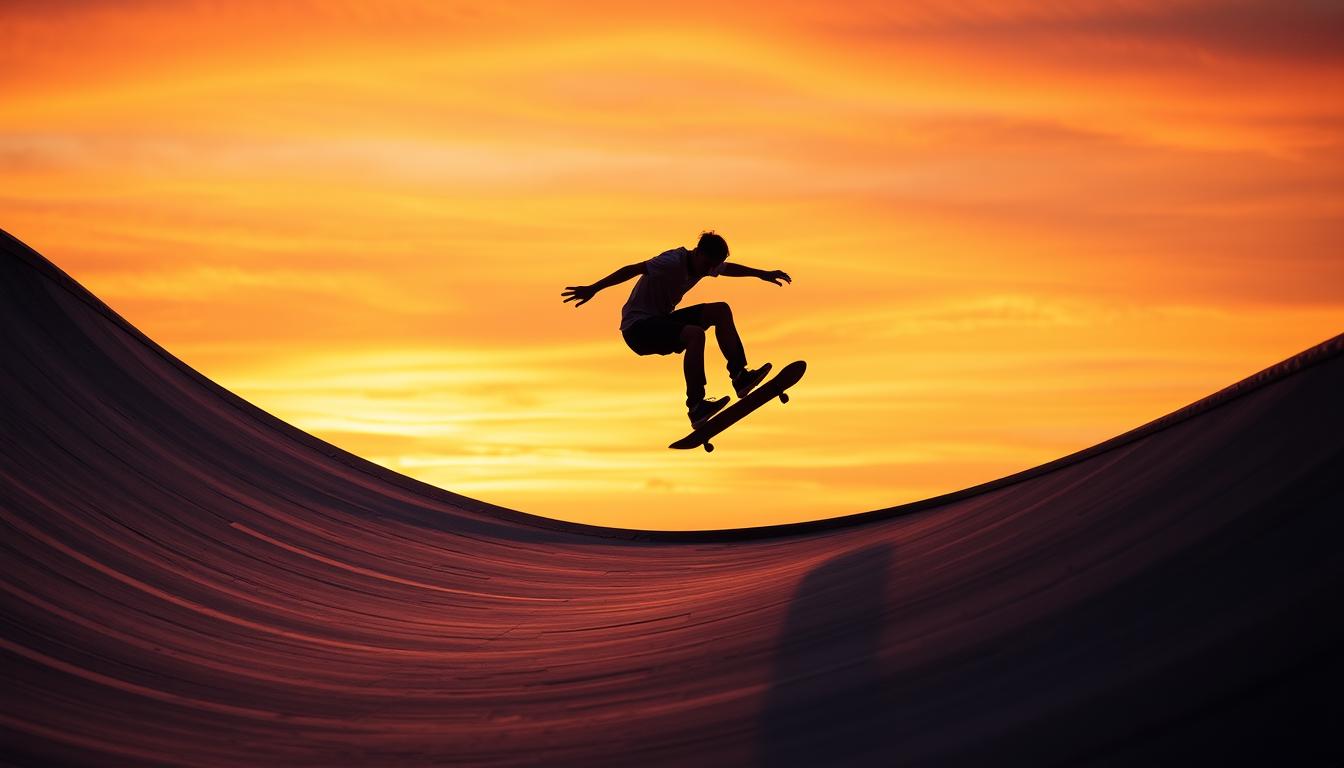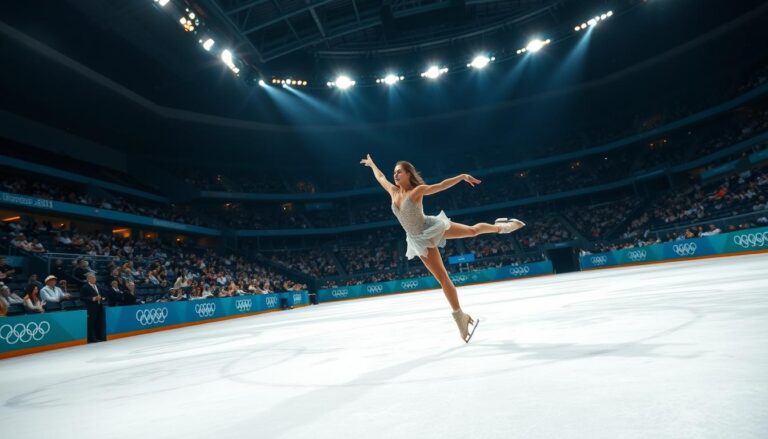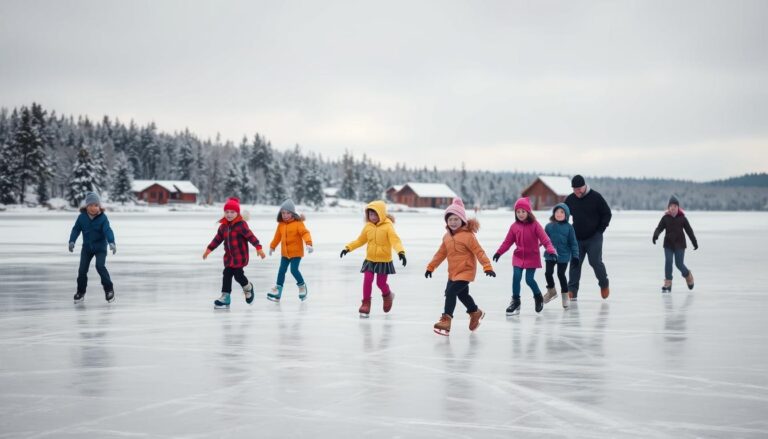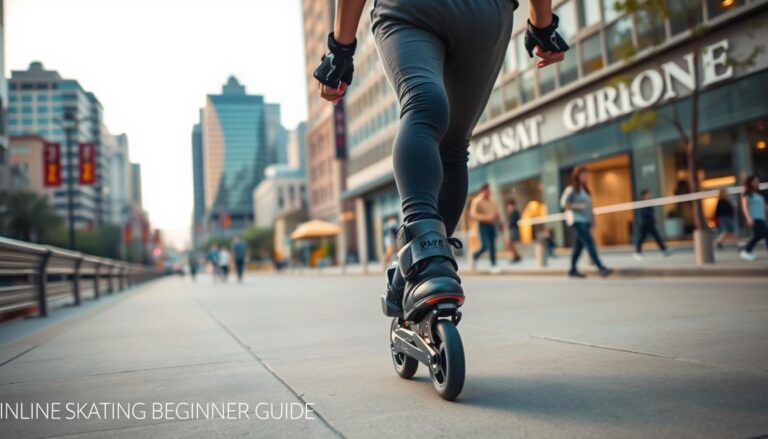What is Transition Skating? Learn the Basics
Imagine standing at the edge of a curved concrete bowl, skateboard gripped tight, anticipation crackling through your veins. This is transition skateboarding – a dynamic discipline that transforms ordinary skating into an art form of fluid motion and calculated precision.
Transition skateboarding is a unique style of riding. It moves beyond traditional street skating, focusing on navigating curved surfaces like ramps, bowls, and half-pipes. What is transition skating? It’s a skateboarding technique where riders smoothly transition between horizontal and vertical surfaces, creating a dance-like interaction with specialized terrain.
Unlike street skating’s linear approach, transition skateboarding explanation centers on understanding curved geometric spaces. Riders use momentum, body positioning, and technical skills to flow seamlessly across different angles and elevations. Your success depends on mastering weight distribution, balance, and reading the terrain’s unique contours.
Professional skaters like Tony Hawk revolutionized this style, transforming transition skateboarding from a niche activity into a globally recognized sport. The discipline demands extraordinary spatial awareness, core strength, and an intuitive understanding of physics and movement.
Beginners often find transition skating intimidating, but with proper technique and progressive learning, anyone can develop the skills to navigate these dynamic surfaces. Your journey starts with understanding fundamental concepts: stance, momentum generation, and confidence-building techniques.
Whether you’re drawn to the technical challenge or the pure adrenaline rush, transition skateboarding offers an exhilarating pathway to mastering a unique athletic expression. Ready to drop in and explore this thrilling world?
Understanding the Fundamentals of Transition Skating
Transition skating is a thrilling style of skateboarding. It challenges riders to master unique terrain and movement techniques. This section will cover the core elements that make it both exciting and technical.
Origins and Evolution of Transition Skating
The roots of transition skating go back to the 1970s in California. Skaters found empty swimming pools with smooth concrete curves. These became the first transition terrains that inspired modern skate park design.
Skaters soon saw the value of curved surfaces. They could generate speed and perform new tricks.
- 1970s: Emergence in empty swimming pools
- 1980s: First purpose-built skate parks
- 1990s: Standardized ramp designs
- 2000s: Global skate park infrastructure expansion
Key Components of Transition Terrain
To understand skate ramp transitions, you need to know the different parts. Skate parks have various curved surfaces that test riders’ skills and how they see gravity.
- Quarter pipes
- Full pipes
- Bowl sections
- Vertical walls
Basic Physics Behind Transition Movement
Transition skating uses basic physics. Riders use momentum and gravity to move on curved surfaces. They turn energy into motion through body movements and board control.
To master transition skating, you need to know how your body, speed, and angle work with the terrain. Every move is a dance between you and the ramp.
What is Transition Skating: A Comprehensive Overview
Transition skating is a thrilling part of skateboarding. It turns ramps and curved surfaces into exciting places to move. Unlike street skating, it focuses on smooth movements and tricks in skate parks.
At its heart, transition skating is about mastering curved surfaces. Skaters use special techniques to speed up, keep moving, and do cool tricks. It’s all about moving smoothly and making shapes come alive.
- Key characteristics of transition skating include:
- Utilizing curved surfaces like bowls, half-pipes, and ramps
- Generating speed through precise body movements
- Executing aerial tricks with controlled precision
- Developing a smooth, continuous riding style
Skaters need great balance and spatial awareness in transition skating. The riding style demands constant adaptation to changing surface angles and momentum shifts. Pros make it look easy, moving smoothly between up and down.
Getting transition skating means seeing its mix of skill and creativity. Riders see skate parks as their own art, using ramps and bowls for new moves and style.
Essential Equipment for Transition Skating
Transition skateboarding needs more than just passion and skill. The right equipment is key to a great experience. It ensures safety, performance, and confidence as you learn new techniques.
Choosing the Right Skateboard Setup
Your skateboard setup is vital for transition skating. The right setup can greatly improve your performance and comfort on ramps and bowls.
- Deck Width: 8.25″ to 8.5″ works best for transition skating
- Truck Width: Should match deck width precisely
- Wheel Hardness: 99A-101A durometer for smooth transitions
Protective Gear Requirements
Safety is always important in transition skateboarding. The right protective gear can prevent serious injuries and boost your confidence.
| Protective Gear | Recommended Type | Purpose |
|---|---|---|
| Helmet | Full-coverage skateboard helmet | Head protection |
| Knee Pads | Hard shell knee guards | Joint protection during falls |
| Elbow Pads | Padded compression sleeves | Arm protection |
| Wrist Guards | Reinforced palm guards | Prevent wrist injuries |
Specialized Equipment Considerations
Advanced skaters often use specialized gear to improve their ride. Slide gloves protect your hands during technical moves. Specialized trucks can also boost your performance.

Quality equipment makes your transition skateboarding journey exciting. The right gear protects you and lets you improve your skills.
Types of Transition Structures and Ramps
Transition skating is a world full of ramps and structures that thrill skaters of all levels. To start, you need to know the unique features of each terrain.
Skate parks have many transition structures to test your skills and creativity. Each surface is different, with its own challenges.
- Mini Ramps: Small, curved structures perfect for beginners learning transition skatepark riding basics
- Half Pipes: Symmetrical U-shaped ramps that allow continuous back-and-forth riding
- Full Pipes: Circular tubes providing an extreme riding experience
- Bowl Ramps: Curved, bowl-like structures with varying depths and angles
Each ramp needs its own techniques and approaches. Beginners should start with easier ramps. This builds confidence and skill for harder terrains.
| Ramp Type | Difficulty Level | Recommended Skill Level |
|---|---|---|
| Mini Ramp | Beginner | New Skaters |
| Half Pipe | Intermediate | Experienced Skaters |
| Full Pipe | Advanced | Professional Skaters |
Learning transition skatepark riding basics takes time, patience, and a desire to learn. Start with simple ramps, wear safety gear, and gradually try harder ramps.
Basic Transition Skating Stances and Positions
Learning transition skating starts with knowing your basic stance. How you position your body affects your skill and confidence on ramps.
Finding the right stance is key for smooth transition skating. Every skater’s body is different, affecting their comfort and control.
Regular vs Goofy Foot Positioning
Your stance depends on which foot feels right at the front:
- Regular Stance: Left foot forward
- Goofy Stance: Right foot forward
Figuring out your natural stance is essential. Try both to see which feels better and balances you best.
Weight Distribution Techniques
Good weight distribution is vital for smooth transitions. Keep these tips in mind:
- Balance your weight over the board’s center
- Keep your knees slightly bent for better movement
- Keep your center of gravity low
Body Alignment Principles
Proper body alignment makes your skating better. Your shoulders, hips, and feet should move together smoothly.
Regular practice helps you get better. Remember, transition skating is about moving smoothly and naturally.
Getting Started: First Steps on Transition
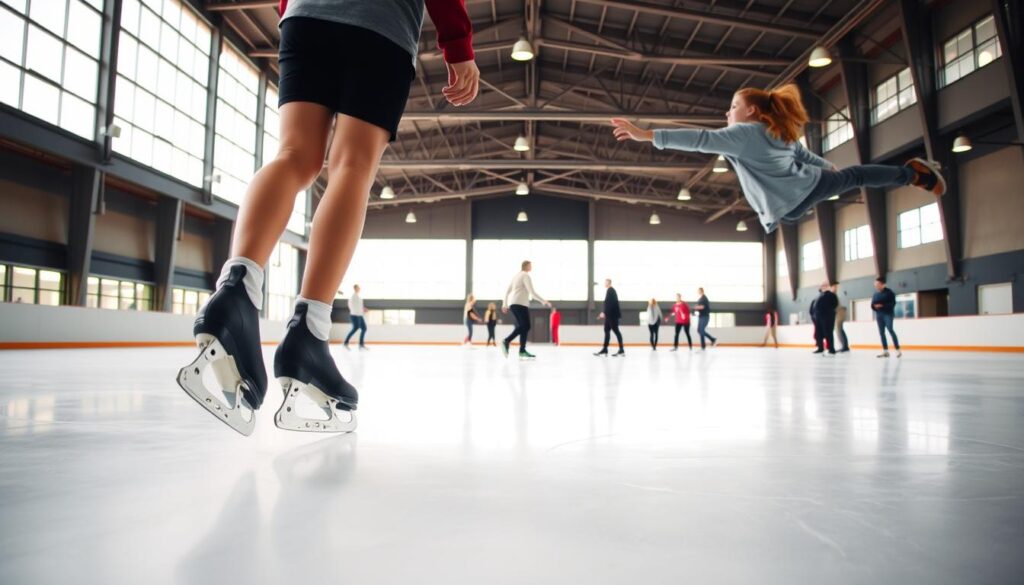
Starting transition skating can seem scary for beginners. It takes patience, practice, and the right steps to learn. Your first steps on a transition ramp are key to your skating journey.
Before you start, know that tips for beginners focus on building confidence and technique. Here are the first steps to take:
- Inspect the ramp surface for smoothness
- Wear full protective gear
- Start on smaller, gentler transitions
- Practice balance and weight distribution
Your first position is very important. Stand with your feet shoulder-width apart, knees bent, and keep a relaxed stance. Weight distribution is key to maintaining control as you move on the curved surface.
Move up by taking on small challenges. Start at the bottom of the ramp, practicing side-to-side movements before going up. Watch experienced skaters and learn from them.
| Skill Level | Recommended Transition | Focus Area |
|---|---|---|
| Beginner | Low-angle mini ramp | Balance and comfort |
| Intermediate | Medium transition ramp | Speed control |
| Advanced | Steep transition bowl | Complex maneuvers |
Every pro skater began where you are now. Enjoy the learning, stay patient, and celebrate your small wins on your transition skating journey.
Core Transition Skating Techniques
Learning transition skating takes time and practice. It turns beginners into skilled skaters. The key skills are vital for moving smoothly through skate parks and bowls.
Transition skateboarding needs a mix of control, awareness, and skill. Skaters must understand the terrain, control their speed, and do precise moves. This makes hard tricks seem easy.
Pumping and Generating Speed
Pumping is key in transition skating. It helps skaters keep speed without pushing. The main points are:
- Shifting body weight through transitions
- Using leg compression and extension
- Timing movements with the ramp’s curve
Basic Turn Mechanics
Smooth turns are essential in transition skateboarding. Skaters need to:
- Keep balance
- Use shoulders and hips for turns
- Carve smooth lines on different surfaces
Drop-in Fundamentals
The drop-in is a big step for skaters. Mastering transition skating means facing fears and learning the right way. Important steps are:
- Position board right for the ramp
- Spread weight evenly
- Keep low center of gravity
- Go down with confidence
Regular practice of these techniques helps skaters move through transitions with ease and skill.
Common Mistakes to Avoid in Transition Skating
Learning transition skating for beginners means avoiding common mistakes. These errors can slow your progress. Knowing them helps improve your skills and confidence on the ramp.
Skaters often face basic technique errors when starting. These mistakes can affect their performance and safety. It’s important to recognize and fix these issues to master skate ramp transitions.
- Incorrect Body Positioning: Leaning too far back or forward disrupts balance and control
- Lack of Commitment: Hesitation prevents smooth movement across ramp surfaces
- Speed Misjudgment: Not adjusting speed for different ramp sizes and angles
- Poor Weight Distribution: Uneven weight can cause unexpected falls
Experts say to focus on core strength and keep a centered stance. Regular practice helps avoid these common errors.
| Mistake | Impact | Correction Strategy |
|---|---|---|
| Incorrect Posture | Reduced Control | Practice balanced stance drills |
| Fear of Commitment | Slow Progression | Gradual confidence-building exercises |
| Speed Management | Potential Accidents | Learn proper speed control techniques |
By learning these tips, you’ll move smoothly and confidently on various ramps.
Safety Measures and Best Practices

Transition skating needs a focus on safety. Knowing and using important safety steps can make your skatepark time safer and more fun. Learning the basics of transition skatepark riding starts with being safe.
Pre-Skating Safety Checks
Before you start, do these important checks:
- Check if your skateboard trucks are tight
- Look at your wheels and bearings
- Make sure your deck is okay
- Check if your protective gear is good
Emergency Response Protocols
Knowing how to handle emergencies is key. Have a plan for:
- Finding the nearest first aid station
- Having emergency contact info
- Knowing basic injury care
- Knowing when to get medical help
Injury Prevention Strategies
To avoid injuries, be prepared. Proper warm-up exercises and learning skills slowly are key. Start with the basics, build your skills, and then try harder things.
Wearing the right gear is a must. Get a good helmet, knee pads, elbow pads, and wrist guards. They help protect you from injuries while you skate.
Progressing Your Transition Skills
Mastering transition skating needs a smart plan for skill growth. Skaters aiming to get better must first build a strong base. This journey is all about patience, practice, and taking smart risks.
To move up, follow these important steps:
- Begin with basic moves and fine-tune your skills
- Work on keeping your body in the right position and balanced
- Slowly add more challenging tricks to your routine
- Learn from pros and watch how-to videos
Breaking down tough tricks into simpler parts boosts confidence. Visualization and mental prep are key to mastering transition skating. Skaters should tackle new challenges with a smart plan, knowing progress comes in small steps.
Key areas to focus on include:
- Getting better at balance and controlling the board
- Understanding how ramps work
- Creating smooth transitions
- Adding new tricks to your list
Always keep safety first as you get better. Wear protective gear and skate in safe places. Skaters should also work with coaches or seasoned riders for tailored advice on mastering transition skating.
Understanding Different Transition Terrains
Transition skateboarding is an art that needs mastering many terrains. Knowing the unique traits of each skating area is key. Each terrain has its own challenges and chances for riders to get better.
Skateparks have many landscapes that test and inspire skaters. The secret to great transition skating is adapting to different surfaces and knowing their dynamics.
Bowl Skating Basics
Bowl skating is thrilling. Riders must focus on a few key things:
- Maintaining consistent speed
- Reading the curve’s geometry
- Perfecting smooth line selection
- Managing energy conservation
Half-Pipe Navigation
Half-pipes need precise technique and smooth movement. Skaters must develop a fluid way to move through these structures:
- Master back-and-forth momentum
- Learn weight distribution techniques
- Practice aerial entry and exit strategies
Mini Ramp Techniques
Mini ramps are great for learning transition basics. They’re small, so skaters can build confidence and improve basic skills.
| Terrain Type | Skill Level | Key Focus |
|---|---|---|
| Bowl | Intermediate | Speed Management |
| Half-Pipe | Advanced | Aerial Techniques |
| Mini Ramp | Beginner | Fundamental Skills |
Every terrain offers special learning chances. Skaters should be patient, practice, and always be ready to improve.
Mental Aspects of Transition Skating
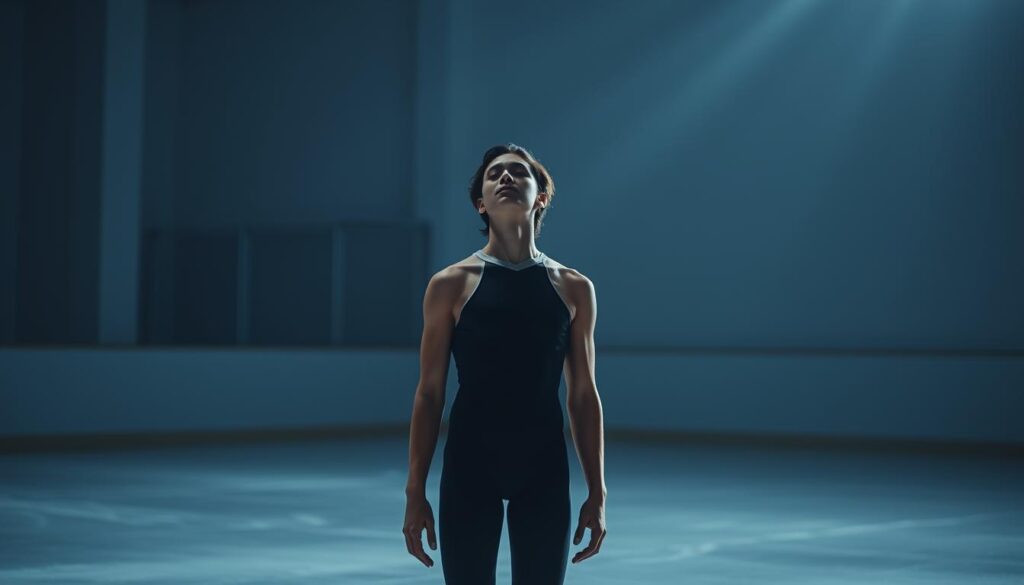
Transition skating is more than just physical skills. It’s also about your mental game. It turns fear into confidence and challenges into chances to grow. Tips for beginners often miss the mental side that’s key to success.
Your mindset is your strongest tool when facing ramps and bowls. Mental preparation includes several important strategies:
- Visualization techniques to plan your moves
- Breathing exercises to control anxiety
- Adopting a growth mindset that welcomes learning
- Using positive self-talk
Fear is normal when starting transition skating. Skaters often hit mental blocks that stop them from exploring new limits. Knowing these barriers helps you find ways to get past them.
Experts say to break down hard moves into simpler steps. This method helps avoid feeling overwhelmed and builds confidence slowly. Mindfulness helps you stay focused and calm during tough skating times.
- Set realistic goals
- Enjoy small wins
- Regularly practice mental rehearsal
- Learn from seasoned skaters
The link between mental prep and physical skill in transition skating is strong. Building a solid mental foundation unlocks your full ability and makes the journey of mastering transition skating thrilling.
Building Confidence on Transition
Mastering transition skating is not just about physical skills. It also needs mental strength and a smart plan. Many tips for beginners focus on the physical, but confidence is key to success.
Progressive Learning Methods
To build confidence in transition skating, start with small steps. Break down hard skills into easy parts that build on each other. This way, you can grow your skills without feeling too stressed.
- Start with basic stance and balance techniques
- Practice on smaller, less scary transition areas
- As you get better, try harder tricks
- Always celebrate your small wins to stay motivated
Fear Management Techniques
Fear can stop you from getting good at transition skating. But, there are ways to deal with it. Breathing exercises and positive thinking are key to feeling more confident.
- Do deep breathing before trying new moves
- Use positive words to yourself to fight off doubts
- Break down big tricks into smaller parts
- Have a special routine to get ready to skate
Success Visualization
Visualizing your success is a powerful way to improve. By imagining yourself doing tricks well, you build confidence before you even try. It’s like training your mind to skate better.
- Picture yourself skating smoothly and in control
- See yourself handling challenges with ease
- Imagine yourself feeling calm and precise
- Make visualization a part of your daily routine
Building confidence in transition skating takes time, effort, and a positive attitude. Every small step you take brings you closer to becoming a confident and fearless skater.
Maintenance Tips for Transition Skating
Keeping your transition skateboarding gear in top shape is key for better performance and safety on ramps. Good maintenance keeps your equipment reliable during tough skateboarding moves.
Effective maintenance begins with regular checks of your gear. Skaters who know how to skate ramps well do routine inspections. This helps avoid accidents and keeps their gear in good condition.
- Inspect deck for cracks or structural damage
- Check truck mounting bolts for tightness
- Examine wheel bearings for smooth rotation
- Evaluate grip tape condition
Your skateboard’s performance relies on careful care. Preventative maintenance is essential for mastering transition skateboarding techniques.
| Component | Maintenance Frequency | Key Check Points |
|---|---|---|
| Deck | Monthly | Structural integrity, no delamination |
| Trucks | Bi-weekly | Bolt tightness, rust prevention |
| Wheels | Weekly | Bearing lubrication, surface wear |
| Grip Tape | As needed | Clean surface, no significant wear |
Professional transition skaters spend time on gear maintenance. By following these tips, you’ll improve your performance and safety. Plus, you’ll make your skateboarding gear last longer.
Advanced Transition Concepts
Transition skateboarding is for the most skilled and creative riders. It’s about mastering advanced techniques. This opens up a world of dynamic movement and personal expression.
Riders looking to improve will find techniques that turn skating into art. These skills need dedication, practice, and a deep understanding of movement.
Complex Maneuvers Introduction
Advanced transition skating requires precision and creativity. Key complex maneuvers include:
- Aerial variations with precise rotation
- Inverted tricks on vertical surfaces
- Lip tricks with detailed hand and foot placement
- Extended sliding and grinding techniques
Speed Management Techniques
Controlling speed is key in advanced transition skateboarding. Skilled riders use techniques to:
- Keep consistent momentum
- Smoothly navigate complex terrain
- Adjust speed without losing balance
- Make smooth transitions between ramp angles
Style Development
Mastering transition skating is not just about technical skills. Style becomes your signature, showing your creativity and individuality. Each rider has a unique riding philosophy.
Creating your style means trying new techniques, studying pros, and pushing your limits. Transition skateboarding is about growing and expressing yourself.
Conclusion
Transition skating is an exciting journey into skateboarding’s most thrilling area. It’s more than just riding ramps; it’s about growing your skills, gaining confidence, and connecting deeply with your board. You’ve learned the basics of transition skatepark riding.
Every skater begins by mastering key techniques and staying open to learning. The skills you’ve picked up, like the right stance and weight balance, lay a strong foundation. Your path will be filled with practice, small steps forward, and a readiness to push your limits safely.
Experts suggest starting slow, respecting your learning pace, and wearing the right gear. Transition skating is a mix of physical challenge and creative freedom. As you try ramps for the first time, remember each try helps you grow and build muscle.
Your skateboarding journey is special and yours alone. Be patient with yourself, enjoy the learning, and cherish every step forward. The world of transition skating is waiting for you. With dedication, passion, and persistence, you’ll go from a beginner to a skilled rider who can conquer any terrain with flair.
